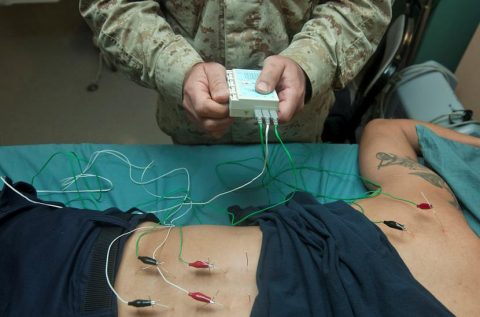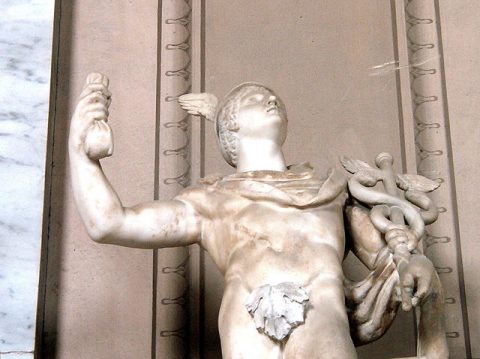[Editor’s note: Mark Crislip is taking a well deserved vacation from blogging, and James Thomas has kindly agreed to provide another guest post to fill the gaping need left in all of your lives. Enjoy!]

Building a case for complementary and alternative medicine. This shouldn’t be hard!
According to the Orwellian-named National Center for Complementary and Integrative Health, roughly 33% of adults aged 18-44 and about 37% aged 45-64 use some form of CAM. More disturbing is that 12% of children aged 4-17 used some form of CAM in the last 12 months. If there is good news, it is that the NCCIH takes a broad view of “complementary health approaches” including acupuncture, Ayurveda, biofeedback, chelation therapy, chiropractic care, energy healing therapy, special diets (including vegetarian and vegan, macrobiotic, Atkins, Pritikin, and Ornish), folk medicine or traditional healers, guided imagery, homeopathic treatment, hypnosis, naturopathy, non-vitamin, non-mineral dietary supplements, massage, meditation, progressive relaxation, qi gong, tai chi, and yoga. In fact these approaches range from the wacky (energy healing therapy, homeopathy) to the mainstream (massage, yoga) with nothing alternative about them. With more than 60 million Americans using some form of CAM, it is fair to ask if we can build a case for truly integrating CAM into mainstream medical practice.
So who are these people using CAM and just what are they using it for? CAM users can be found in almost every demographic but the largest cohort is white, female, and fairly well educated. A good deal of CAM is used for common and often vague conditions with back pain being the most commonly cited. But it is also used by cancer patients, for cardiovascular disease, and even for Alzheimer’s disease. The problem is that none of the CAM approaches are useful for any of these conditions; strike that, none of the CAM approaches are useful for anything at all much beyond placebo.
I’m going to keep this essay down to a more reasonable length than my earlier offerings (pauses here for the applause to fade) so I’m not going to talk much about most CAM “modalities.” Reiki is deconstructed here and here, or for those who just want a Crislipian good time, here. Homeopathy is eviscerated here. For the deeper dive go here, or for the full monte, here. If after that you still have questions about homeopathy you should probably get a hobby.
But wait, there’s more!
Chiropractic, and acupuncture, and hypnosis, and chelation, and, and…go to the masthead and enter the CAM of your choice in the box with the little magnifying glass. If some charlatan has offered it as a medical treatment, this is your gateway to good information about it. But (and that ‘but’ was your spoiler alert), none of it has much impact on any measurable medical condition. CAM does not shrink tumors, CAM does not dilate bronchi, CAM does not strip pounds of icky toxins out of your colon. Those claims and most others are easily dismissed by anyone with basic reasoning skills and the URL for Pubmed (here it is: http://www.ncbi.nlm.nih.gov/pubmed).
There are however, two arguments in favor of CAM that deserve a bit more careful consideration: electro-acupuncture for pain relief through the mechanism of stimulating endorphin release, and the more general argument that many patients have needs unmet by the medical mainstream, often psycho-social needs that do not have an ICD-10 (a type of diagnostic code) and for which no treatment infrastructure exists within the mainstream health care delivery system. These are the cases I’ll try to build today.
Back in the day, Choh Hao Li was a big deal in biochemistry. Twice nominated for Nobel Prizes, he won a Lasker for Basic Medical Research. It was Li who first isolated beta-endorphin, a powerful peptide with properties similar to opiates. In fact the word endorphin is a portmanteau of ‘endogenous morphine.’ In 1976, Li published “ß-Endorphin is a Potent Analgesic Agent,” demonstrating that beta-Endorphin was, on a molar basis, at least in mouse* models, 18-33 times more potent than morphine. Almost immediately the acupuncture community jumped on the beta-endorphin bandwagon – all, curiously enough, using electro-acupuncture. I hasten to note that Dr. Li was never, so far as research discloses, associated with acupuncture or electro-acupuncture.
It is a very long walk from recognizing the role of endorphins in mediating pain to demonstrating that electro-acupuncture actually causes their release. Studies in the area of acupuncture and electro-acupuncture, not unlike studies of any of the CAM pseudo-procedures, are a hodgepodge of self-delusion, wishful thinking, and occasionally useful work. Be that as it may, the claim has been made. Mark Crislip had a look at this and was unimpressed. A small study reported in Neurolgia I Neurochirurgia Polska (the Polish journal of Neurology and Neurosurgery) casts doubt on the basic idea of acupuncture causing release of endorphins into circulating blood. It has also been argued that endorphins might also be released directly in to cerebrospinal fluid (CSF). Into the bloodstream, into the CSF, into nowhere but the imagination of electro-acupuncturists; it matters not, as we shall see.
Electro-acupuncture: A special case?
In the first place, electro-acupuncture is not acupuncture despite both involving needles just as Aerosmith is not Joni Mitchell though some claim both involve singing. The Traditional Chinese Medicine (TCM) in which acupuncture claims its roots antedated Guangzhou Tiger Head Battery Group Co., Ltd. by … a lot. So is electro-acupuncture really acupuncture delivered by the Energizer bunny, or is it simply TENS as imagined by a pincushion?
So far as I was able to find, there are no Pubmed-indexed studies claiming to demonstrate endorphin release into the bloodstream using honest, straight, meridian-loving acupuncture. I also couldn’t find any claiming acupuncture induced endorphin release into CSF without electrical stimulation – even substituting chiropractic stimulation and a reiki turbo boost. Therefore we must reasonably conclude that endorphin release as a consequence of acupuncture, either into circulating blood or into cerebrospinal fluid is, um, speculative so we will focus on electro-acupuncture here. But one does find interesting things searching Pubmed for acupuncture studies including, and this is apropos of absolutely nothing, “Improvement of the oocyte quality with electroacupuncture in infertility patients of kidney deficiency pattern.” You may wish to meditate upon this wisdom now.

Don’t Taze me Bro!!!
For the sake of argument, let’s pretend that it does, that electro-acupuncture causes the release of endorphins…somewhere. The problem now becomes pharmacokinetics. Once you release endorphins into, say, the bloodstream, they almost immediately begin to be processed out through a process called metabolic clearance. That is why a runner’s high (or a dry martini) doesn’t last forever. In the case of beta-endorphin, the half-life after intravenous administration is 37 minutes. After intracerebroventricular administration, the half-life in the CSF is about an hour and a half. That means that after 37 minutes (or 93 minutes in the CSF), half of the beta-endorphin is gone. When you take aspirin for headache and it comes back later, you can take another couple of aspirin. On the assumption that electro-acupuncture actually stimulates release of beta-endorphin, if you take a treatment for, say, cancer pain, an hour or two later when the effect is gone, you do what? Go back for another round? The thought occurs that it might be best to just leave the needles in and haul around a battery pack. But then…
A healthy 46-year-old female presented to the emergency department (ED) with the complaint of a foreign body sensation in her throat. Patient stated that she was eating a hamburger and chips for lunch when she acutely felt “a piece of a potato chip” lodge in her throat.
Soft tissue neck radiograph revealed a needle-shaped metallic foreign body. This raised a very concerning question of how the needle got there and whether it had been intentionally placed in the food by the patient or another party intending harm.
A bedside fiberoptic laryngoscopy performed by the on-call ENT surgeon showed an embedded 3.3 cm metallic foreign body lodged in her right piriformis sinus, and she was taken to the operating room for removal. Direct laryngoscopy confirmed that the foreign body was an acupuncture needle and that it had not been swallowed but extruded from the wall of the esophagus into the piriformis sinus.
“Upon further questioning, the patient said she had acupuncture therapy in an alternative medicine clinic to treat whiplash-associated neck pain after a car accident. This therapy, in which the acupuncturist had placed needles in the back of her neck, occurred six months prior to her presentation to the ED. She did not recall whether one of the needles had broken, but after the procedure she continued to have pain in the neck. For six months until the ED diagnosis, she blamed the car accident for her chronic neck pain.
So…there doesn’t seem to be much evidence that electro-acupuncture actually stimulates endorphin release. If it happens that it does stimulate endorphin release, the endorphins don’t last very long. And inserting needles is not without risk. Finally, walking around with wired acupuncture needles poking out like a cyberpunk porcupine isn’t a good look for anyone.
We have labored mightily to build a case for this one little corner of CAM but sadly we have failed. But all is not lost …
Vague complaints, vaguer solutions

Wait, wait, we can fix this!
While CAM may not be good for much of anything in particular, there are some who argue that CAM has value for lots of things in general. By this I mean there are those who recognize that CAM is not medicine in any meaningful sense of the word, but who argue that many patients have psychosocial needs that are poorly addressed by the mainstream medical community and that CAM can address some of those needs. Perhaps it is on this that we can build our case for CAM.
These unmet needs are to be found among young adults, those with multiple sclerosis, among cancer sufferers, in fact in a great many groups and individuals. These needs vary from a step up in bedside manner, to intensive psychiatric care, to a broad range of social services. Let’s stipulate for our purposes here that these needs are real and they are more-or-less common. Let’s further stipulate that these needs should be addressed and that lacking any other structure to address them, the health care system gets the job. Given this commodious definition of needs and those who need them met, surely a compelling case for at least some CAM use can be built.
There are many needs that impact a patient’s health, their care, and their recovery, that are not precisely medical problems, though they certainly may have medical consequences. By way of example, Brijmohan, et al found that kidney transplant patients need support groups that are in their neighborhoods rather than in distant hospitals that can be hard to reach. This isn’t, in and of itself, a medical problem. This is a psychosocial need that a hospital, for instance, cannot meet. But then it isn’t a problem particularly well suited to CAM either. It is a spatial and temporal problem. Perhaps on-line groups could be viable solution. This would allow people in a wide geographic area who are united only in their common medical status to give support to one another. It would also allow the group to be coordinated by an appropriate leader who might again be geographically removed, and would simplify bringing various experts to address and interact with the group.
If the group is to be coordinated by an appropriate person, what characteristics might be desirable? Would a support group for kidney transplant patients and their families be best led by a social worker or psychologist with training and experience in the psychological and social needs of this group, or by the special talents of, perhaps, a naturopath? The psychologist or social worker would be expected to understand the financial and social burdens faced by transplantees, as well as the unusual encumbrances imposed by long-term immunosuppressive therapy. What in the training of a naturopath would prepare them for this role? Moreover, given the vitalist beliefs that have, and likely always will, animate naturopathy, would the naturopath be expected to understand and support the essential role of immunosuppressive therapy in the transplant patient’s recovery? Are there objections that we have chosen the wrong CAM? Would a homeopath or chiropractor be better suited?
If we are going to identify unmet psychosocial needs with the intention of actually meeting those needs, rather than simply acknowledging them and sending the needful somewhere out of sight, there is an ethical responsibility to address those needs competently. We would not send a person to a court of justice represented by someone who had watched a good number of episodes of Law and Order; we would send them with an attorney. Why does the kidney transplant group deserve less?
Some will now argue that by “psychosocial needs,” they mean something simpler, really nothing more than the investment of time and personal attention that mainstream medicine with its tight time tables and austere surroundings simply can’t provide. The more grounded of these will acknowledge that while, say, chiropractic isn’t going to be of medical value to the stroke victim, the real point is that someone with the appearance of authority will spend a good deal of time talking and listening and touching the patient, and that this alone will assuage fears, settle nerves, and improve the patient’s attitude and sense of well-being. There isn’t much good-quality research exploring this directly and unambiguously but there is considerable research supporting the value of “nonspecific” effects. For instance, Roberts, et al. argue that nonspecific effects may account for as much as two thirds of successful outcomes and that all that really matters is that both patient and provider believe in the efficacy of a treatment. One might quibble over what constitutes a “successful outcome” and one might quibble over the percentage of outcomes in which nonspecific (you can reasonably read placebo) effects play an important role, but that they play some role some of the time is undeniable.
Roberts considered medical procedures provided by medical doctors; significant interventions such as glomectomy for asthma and gastric freeing for duodenal ulcer. Harris, in Surgery, The Ultimate Placebo examines unintentional placebo effects in a variety of surgical procedures. Benedetti, Carlino and Pollo argue that placebos produce real psychobiological effects:
On the basis of the neurobiological findings presented in this review, it is clear that whenever a medical treatment is carried out, a complex cascade of biochemical events is activated by several social stimuli.
This is in one sense simply a restatement of the tautology that placebo effects aren’t nothing. Exploring placebo effects more deeply, Benedetti et al., using Alzheimer’s patients as their test subjects, found that patients with reduced Frontal Assessment Battery scores (a rough measure of executive function including expectation) showed reduced placebo contribution to analgesic treatment. That is to say that the ability to form expectations has a good deal to do with the potency of placebo effects. Sölle, et al state that placebo responses can be induced by three mechanisms:
- expectation induced via instructions
- expectation induced via classical conditioning and
- expectation induced via social learning.
Each of these, it should be noted, is a variant of conditioned response.
If unintentional placebo effects are ubiquitous and useful in mainstream medical care, why then not employ intentional placebo effects in the hands of CAM practitioners where they can be delivered in relaxed surroundings, at lower cost, and without the risks of powerful drugs and invasive procedures?
Why, indeed. Nonspecific effects, that is to say unintentional placebo effects, are incidental to the practice of medicine, a product of expectation and conditioned response in the patient, the clinician, and often in both. But at the core of the practice of medicine are (usually) science-based treatments. Nonspecific effects in a science-based context may, for example, potentiate real pharmacological analgesic effects or even produce analgesic effects without any pharmaceutical at all. The role of placebo effects in this setting is relatively benign even if the specific intervention employed later proves to be ineffective. While one given intervention may prove to be ineffective, medical interventions in general are effective. Expectations and conditioning are tethered to the objective reality of science-based medicine and to its rituals, such as examinations, laboratory workups, and radiographic studies.
Placebo effects associated with homeopathy, naturopathy, reiki, and the like, are never benign because nothing substantial lies at their core. There are rituals but no objective realities from which they draw. There is only illusion and mythology. In this context, expectation and conditioned responses are abused. That serendipity in the guise of regression to the mean creates the illusion of efficacy despite the objective uselessness of “alternative” interventions underscores the inherent fraudulence of CAM. Analogously, the expectation that diligent work will lead to success remains a reasonable expectation even when serendipity lends a hand. The expectation that buying a lottery ticket will solve one’s financial woes is unreasonable – regardless of the hand of serendipity.
It is important to draw a clear distinction between the utility of nonspecific effects in a clinical setting, and the exploitation of those effects by charlatans who ascribe them to magical, mystical, unscientific causes. At the heart of nonspecific effects, placebo effects, lies conditioned response. Considerable thought should underwrite the stimuli to which responses are to be conditioned. Science-based medicine works diligently to separate real clinical benefit from the mere illusion of it, all in service of real improvement in quality and duration of life. Conditioning responses to the stimuli of science-based medicine are entirely reasonable.
When we shift placebo effects outside the science-based world we are, in fact, encouraging patients to accept therapies with no foundation in reality and wittingly or not, reinforcing that lie when nonspecific effects and regression to the mean run their course. A thorough investigation of placebo ethics is beyond the scope of this essay and might be a good topic for the future. But it does not take a Sissela Bok to recognize the inherent problem of encouraging false beliefs. Once the value of honesty is discounted, where does that process end? If it is acceptable to believe that water holds memory and that memory will guide water molecules to cells that just happen to need the memories held, why is it not acceptable to believe that earth is 6,000 years old? There is a reasonably hard line between reality and fantasy. Once that line is discarded, what makes any lie unacceptable?
Construction is almost complete!
The literature of science-based medicine treats placebo effects as a baseline against which the true value of various interventions is measured. Early on CAM tried to assert that its interventions too were more than placebo and, in their failure to make that case, retreated to the argument that placebo is relevant in and of itself. Many CAM “modalities” have begun to back away from claims of substantial medical effects; the science simply shows that no such effects exist. For instance, this essay examined the specific case of electroacupuncture and endorphin release but found that even the most generous interpretation of the science failed to make a case. When CAM retreats to the admission that it is “only” placebo, it creates the false impression that it is therefore innocuous. It isn’t.
There are real differences between unintentional and deceptive placebo effects, both practical and ethical. Unintentional placebo effects are those that arise spontaneously from medical interactions and deceptive placebo effects are those that lack objective realities at their cores. While deceptive placebos are the stock in trade of CAM, they have been used by physicians as well. While a fig leaf has sometimes been claimed for deceit in the hands of medical professionals, CAM is left to its nakedness.
[I]t is not enough for the practicing physician to choose the best (most efficient) therapy and protocol; he will also have to consider whether it is morally licit to use a placebo, such as a subtherapeutic dose, to start treating a refractory disease, such as deep clinical depression. The “alternative” healers do not face this moral problem because they do not measure anything.
– Bunge, Medical Philosophy: Conceptual Issues in Medicine (2013), Chapter 7

Hermes (Mercury) needs a fig leaf. CAM doesn’t and besides there’s no Greek god of quackery.
There is a line between truth and falsehood. That line has long been ignored and, consequences be damned, there are academics hard at work erasing any remaining vestiges of it in the field of medicine. That being the case, Harriet Hall has put the problem and a practical solution in balanced ethical terms:
Lying is always wrong, and prescribing placebos is always wrong. But in some cases the alternative is wronger. If we violate the ethical principles, we take on a great responsibility. It means we are paternalistically deciding what is best for the patient, and we could be wrong. Violating the rules is sometimes the lesser of two evils, but it should happen rarely and should make the violators search their conscience, agonize over their decision, feel guilty, and not sleep as well.
Would that her approach was the default.

Success! Behold the case for CAM.
